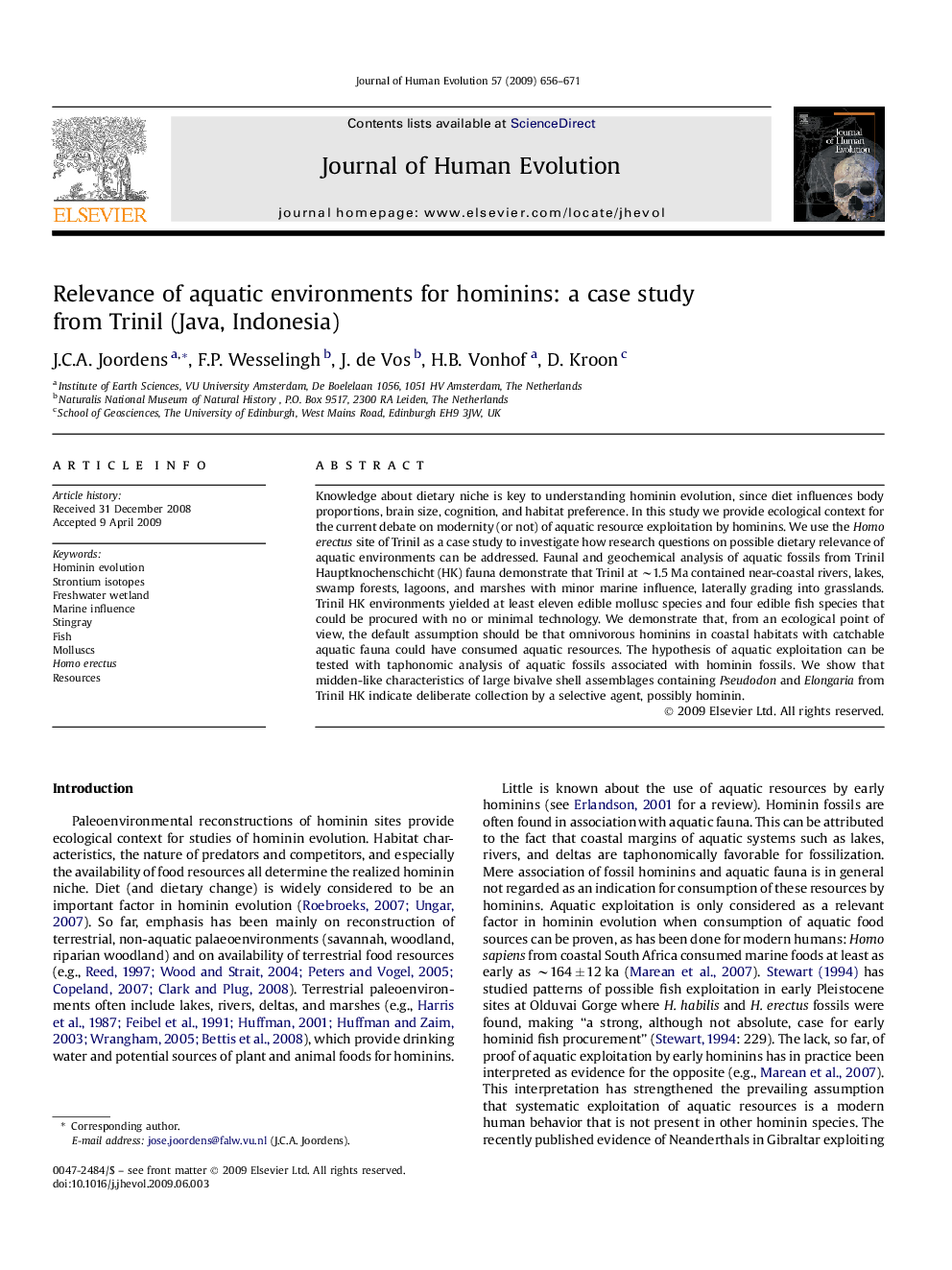| کد مقاله | کد نشریه | سال انتشار | مقاله انگلیسی | نسخه تمام متن |
|---|---|---|---|---|
| 4556798 | 1329504 | 2009 | 16 صفحه PDF | دانلود رایگان |

Knowledge about dietary niche is key to understanding hominin evolution, since diet influences body proportions, brain size, cognition, and habitat preference. In this study we provide ecological context for the current debate on modernity (or not) of aquatic resource exploitation by hominins. We use the Homo erectus site of Trinil as a case study to investigate how research questions on possible dietary relevance of aquatic environments can be addressed. Faunal and geochemical analysis of aquatic fossils from Trinil Hauptknochenschicht (HK) fauna demonstrate that Trinil at ∼1.5 Ma contained near-coastal rivers, lakes, swamp forests, lagoons, and marshes with minor marine influence, laterally grading into grasslands. Trinil HK environments yielded at least eleven edible mollusc species and four edible fish species that could be procured with no or minimal technology. We demonstrate that, from an ecological point of view, the default assumption should be that omnivorous hominins in coastal habitats with catchable aquatic fauna could have consumed aquatic resources. The hypothesis of aquatic exploitation can be tested with taphonomic analysis of aquatic fossils associated with hominin fossils. We show that midden-like characteristics of large bivalve shell assemblages containing Pseudodon and Elongaria from Trinil HK indicate deliberate collection by a selective agent, possibly hominin.
Journal: Journal of Human Evolution - Volume 57, Issue 6, December 2009, Pages 656–671